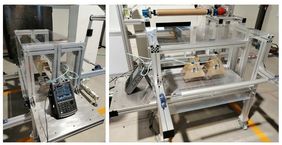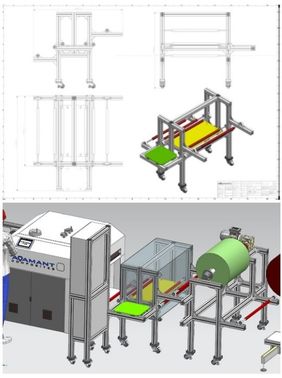To address Aerospace’s and not only ever-increasing demands from the properties of the materials being used, Adamant Composites has proposed a method to enhance prepreg materials, which already exhibit specific properties. As an outcome of this effort, Adamant Composites introduced functional prepregs into the composites market utilizing the innovative FXply™ Technology! (see Adamant’s website for more details: https://materials.adamant-composites.gr/?section=2078#fxply-preopregs)
To ensure high quality of the end product, which is required by the Aerospace sector and guarantees the high performance offered by the FXply™ Prepregs, an added feature in the form of a quality control station that has been developed within the framework of MMAMA project has been successfully integrated into the R2R pilot line. This need for an in-line, contactless quality and performance inspection method led to the development of a microwave based inspection module, which has been realized under the combined forces of Adamant Composites Ltd, the Institute of Electronics, Microelectronics and Nanotechnology (IEMN) of University of Lille and Keysight Technologies Austria Gmbh.
The combination of IEMN’s expertise in microwave techniques and Keysight’s leading electronic equipment, resulted in a Free Space monostatic instrumentation consisting of two horn antennas (AH Systems 248 SAS-571 Double Ridge Horn Antenna 700MHz - 18GHz), which are connected to a Keysight fieldfox (26 GHz) VNA through high stable coaxial cables. Measurements are performed at 10 GHz, with an RF output power set to 0 dBm and intermediate frequency bandwidth IFBW set to 100 Hz. Nevertheless, this MMAMA prototype is versatile and offers the possibility to adapt the type, position and number of antennas. The data analysis workflow dictates the determination of the RF electrical conductivity from the measured data. The analysis is straightforward and can be adapted easily towards the manufacturing line.
This result of this collective work performed within the MMAMA project sets a very promising base for a contactless microwave method that can be used for real-time on-line monitoring and control of an industrial manufacturing process. This will be further evaluated within the MMAMA project, but this is also one of MMAMA’s outlooks that is expected to find support for further development within industrial environments.








